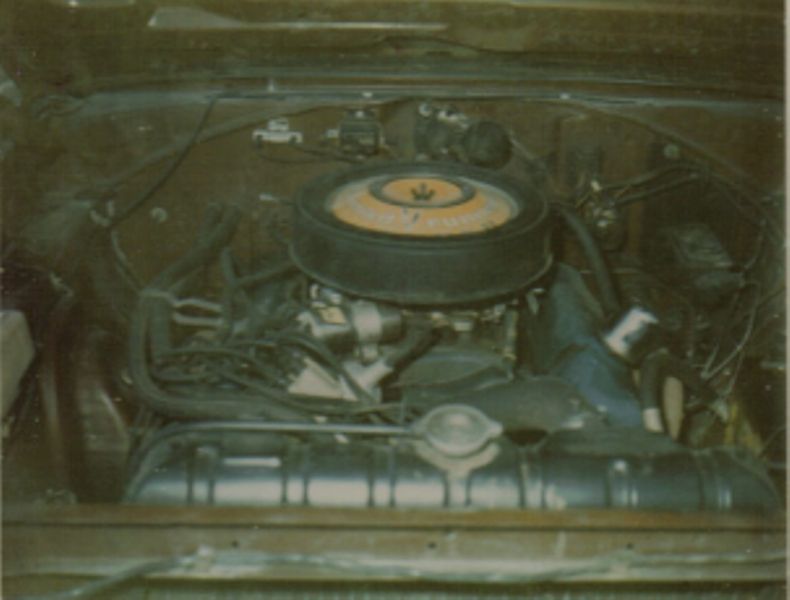fratzog lover
Well-Known Member
Would be neat to assemble the parts today and build one. Would an RPM intake be comparable in todays world? Or an old dp4b? The cam is the easy part.
Would be neat to assemble the parts today and build one. Would an RPM intake be comparable in todays world? Or an old dp4b? The cam is the easy part.
My 383 with 284/484 build used a Torker intake (which everyone still says not to use despite "the numbers" suggesting otherwise), a Holley 650 DP with a 750 rear metering block setup, and cheap line Hooker headers. Cam degreed as per Mopar instructions with lots of initial dist advance. Carb was the lynch pin and took months to figure out. was getting way too much fuel at idle and not nearly enough at WOT.
Everyone said "too much cam and not enough converter", but it ran GREAT.
That was a great intake. On a big block.
Small block mopar guys dont like em as much.


Paul,
On ANY stock 68-71 383 or 440 Magnum, set the total timing at 38 degrees. Huge difference!
Here's my '68 383/727 Roadrunner bought used in 1971
3.91 Sure Grip
Sig Erson SH130 cam (can't find the specs anymore but I believe was a .484)
Doug's headers
Edelbrock DP4B (Big difference)
Mallory 4-lobe distributor
Accel coil & wires
Holley 800 DP not as good as hot-rodded 625 AVS with enlarged secondary jets
and completely removed air valve secondary door
Pictures before and after:


John,
I agree .......... 35* Total Advance is just not enough.
On The Sig Erson SH-130
There are a couple of specs out there.
> .440" Lift ~ 310* Duration
> .472" Lift ~ 310* Duration
> .493" Lift ~ 310* Duration
Fred-Head
Back-in-the-Day, when Gasoline was good.
I never liked the 'stock' Flat-Top Pistons for the 383. Yes, they were the
most durable 'slugs', but very heavy at {928 Grams} with the Pins.
We always swapped them out for a set of 'light' Forged-True {10.0-1} Flat-Tops,
which came in at {632 Grams} with the Piston-Pins.
The 383 required lighter reciprocating-weight, to get to Maximum Horsepower much quicker in the Street-Performance Engines.
In Agreement,
The 'old' Edelbrock 'Torker 383' worked wonders on the 383 with an Automatic.
And 'long tube' Headers > 1 3/4" Primary x 42" Tube Length.
That combination, put out incredible Mid-Range Torque.
Legal Cheater
Back in 1970 and 1971, we built a 1968 Plymouth Satellite 383/330 HP for NHRA Class 'H/SA'.
The Satellite weighed in at #3495 and with the 330 HP factor it came in at 10.59 Wt/Hp.
The Competition >
* 1969 Chevy Nova SS 350 {350/295 HP}
* 1970 Chevy Camaro SS 350 {350/300 HP}
* 1967 Chevy II Nova SS {327/275 HP}
* 1968 Chevelle SS 396 {396/325 HP}
* 1970 Chevelle SS 396 'Convertible' {396/350 HP}
* 1968 Ford Fairlane GT {390/325 HP}
* 1969 Ford Mustang Mach 1 'Hardtop Coupe' {351W/290 HP}
* 1967 Ford Mustang 'Fastback' K-Code {289/271 HP}
* 1970 American Motors 'Rebel Machine' {390/340 HP}
* 1965 Pontiac GTO {389/325 HP}
* 1969 Oldsmobile 4-4-2 {400/325 HP}
* 1965 Dodge Coronet {383/330 HP}
* 1969 Plymouth Road Runner 'Convertible' {383/335 HP}
* 1962 Plymouth 'Sport Fury' {361/305 HP}
* 1962 Dodge 'Station Wagon' {383/343 HP}
Nearly everyone was a 'legal cheater', running in the low 13.00's.
Ah Ha, to compete we did >
* Forged-True Pistons {10.5-1 Compression}
* Match-Ported the Cylinder Heads
* Mopar #3412004 Camshaft {.484" Lift ~ 284* Duration ~ 68* Overlap}
* Mopar 440-6 {Six-Barrel} Valve Springs
* Adjustable Rocker-Arms
* Carter AVS {750 CFM} from the Mopar 440.
Yea, we put down 12.85's @ 109 MPH.
I believe we 'nabbed' 31 Class Trophy's over the 2-Year {1970 and 1971} span.
That's a hauling 383 in a satellite, good combo.
